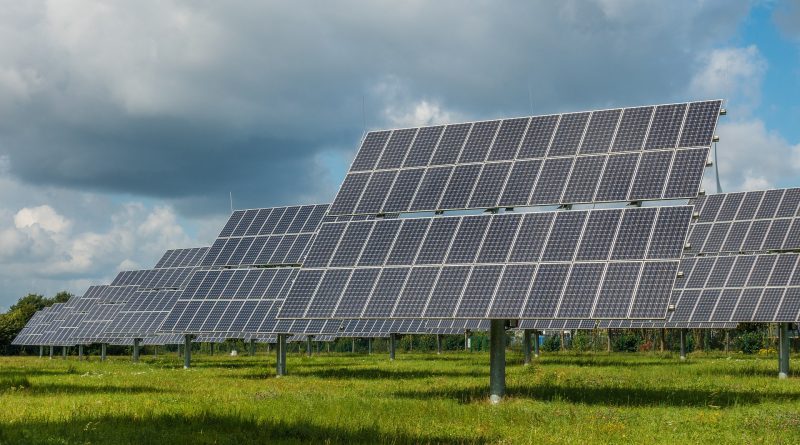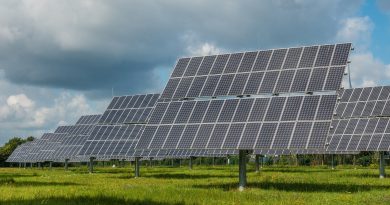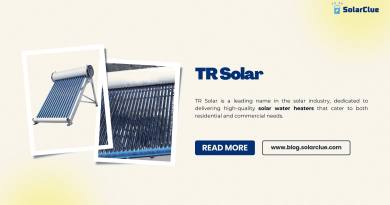Understanding How Off-Grid Solar Plants Work
Off-grid solar plants have become increasingly popular in recent years as an environmentally friendly and cost-effective alternative to traditional energy sources. These plants provide electricity to remote areas that are not connected to the power grid, allowing people to harness the power of the sun to meet their energy needs. But how exactly do off-grid solar plants work? In this blog, we will delve into the inner workings of these plants and understand the process from the collection of sunlight to the distribution of electrical power.
Table of Contents
How Off-Grid Solar Plants Work
Off-grid solar plants primarily consist of four key components – solar panels, charge controller, battery bank, and inverter. Let’s take a closer look at each of these components.
Solar Panels
Solar panels are the heart of any solar power system. These panels are made up of photovoltaic cells that convert sunlight into direct current (DC) electricity. When sunlight hits a solar panel, the photons in the sunlight excite the electrons in the photovoltaic cells, creating a flow of electricity. Multiple solar panels are interconnected to form an array, allowing for a higher power output.
Charge Controller
The charge controller is responsible for regulating the flow of electricity from the solar panels to the battery bank. It prevents overcharging and deep discharge of batteries, ensuring their longevity and efficiency. The charge controller also protects the battery against excessive voltage, which can be harmful in the long run.
Battery Bank
The battery bank is a crucial component of off-grid solar plants as it stores excess electricity produced during the day for use during the night or on cloudy days. Deep-cycle batteries, specifically designed for solar applications, are used in this system. These batteries store the DC electricity and convert it into alternating current (AC) electricity when needed.
Inverter
The inverter is responsible for converting the DC electricity stored in the battery bank into AC electricity, which is the standard form of electricity used in most homes and businesses. It ensures that the electrical power produced is compatible with various appliances and can be used directly without any modifications.
Working Mechanism
Now that we have an understanding of the components, let’s explore the working mechanism of an off-grid solar plant.
1. Sunlight Collection: Solar panels collect sunlight throughout the day and convert it into DC electricity. It is essential to position the solar panels in a location that receives maximum sunlight exposure to maximize energy production.
2. Charge Control: The charge controller regulates the flow of electricity from the solar panels to the battery bank. It ensures that the batteries are charged efficiently without overcharging or deep discharging, thereby extending their lifespan.
3. Energy Storage: Excess electricity produced by the solar panels is stored in the battery bank during the day. These deep-cycle batteries can store a significant amount of energy, allowing for power usage during nighttime or when sunlight is limited.
4. Power Conversion: When electricity is required, the inverter converts the DC power stored in the battery bank into AC power. This allows the electricity to be used by electrical appliances and devices, just like power from the utility grid.
5. Power Distribution: The AC power generated by the inverter is now ready for distribution. From here, it follows the usual path of electrical wiring and distribution to provide electricity to the connected appliances, lighting, and other electrical loads.
Benefits of Off-Grid Solar Plants
Off-grid solar plants offer several advantages over traditional energy sources, making them an attractive option for many:
1. Energy Independence: By generating their own electricity, off-grid solar plant owners are no longer dependent on the utility grid. This is especially beneficial in remote areas where the grid may not reach.
2. Environmentally Friendly: Solar energy is renewable and clean, producing zero greenhouse gas emissions. Choosing off-grid solar plants helps to reduce the carbon footprint and combat climate change.
3. Cost Savings: Once the initial setup cost is recovered, off-grid solar plants provide free electricity. This can result in significant cost savings in the long run, especially in areas where grid connection is expensive or unreliable.
4. Reliability: Solar plants are known for their reliability and longevity. With proper maintenance, these systems can last for decades, ensuring a consistent and dependable source of electricity.
Conclusion
Off-grid solar plants have revolutionized the way we generate and consume electricity. By harnessing the power of the sun, these plants provide energy independence, reduce environmental impact, and offer long-term cost savings. Understanding the core components and the working mechanisms of off-grid solar plants gives us insights into their efficiency and reliability. As the world transitions towards sustainable energy solutions, off-grid solar plants play a significant role in shaping a greener future.
Frequently Asked Questions
Off-grid solar plants generate electricity using photovoltaic panels, storing excess energy in batteries for use during periods of low sunlight or at night.
Excess energy generated during sunny periods is stored in batteries, allowing the system to provide continuous power even when the sun is not shining.
Yes, off-grid solar plants are designed to operate independently, making them suitable for remote areas or locations without grid access.
Inverters convert DC electricity generated by solar panels into AC power, making it compatible with household appliances and ensuring seamless integration with the off-grid system.
Yes, these systems can be scaled by adding more solar panels and increasing battery storage capacity to meet specific energy demands.
Well-designed off-grid systems account for seasonal changes, ensuring reliable energy production throughout the year by adjusting panel angles or increasing storage capacity.
While more common in remote areas, off-grid solar plants can be installed in urban locations, offering energy independence and potential cost savings.
Battery storage in off-grid systems inherently acts as a backup power source during emergencies or grid outages, ensuring continuous electricity supply.
Regular maintenance includes checking battery health, cleaning solar panels, and inspecting the overall system to ensure efficient operation.
Off-grid solar plants reduce dependence on traditional power sources, promote clean energy use, and minimize environmental impact.



